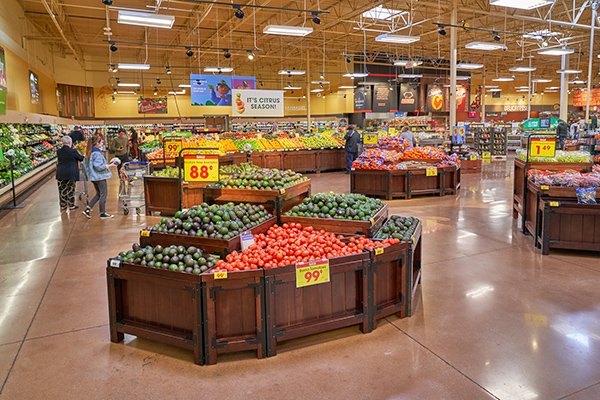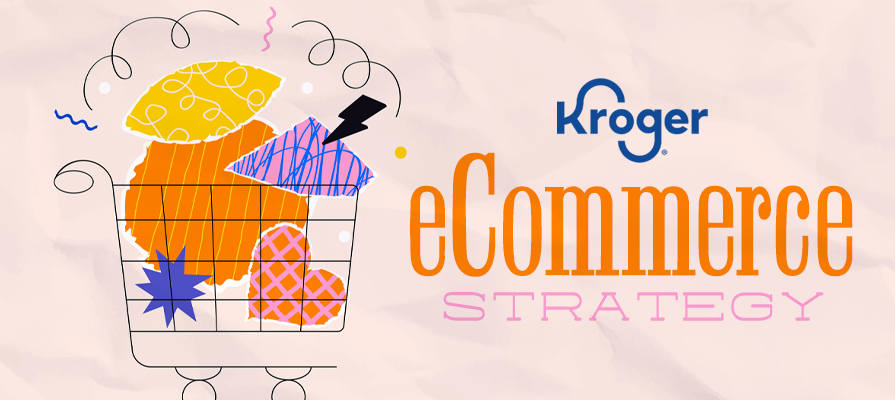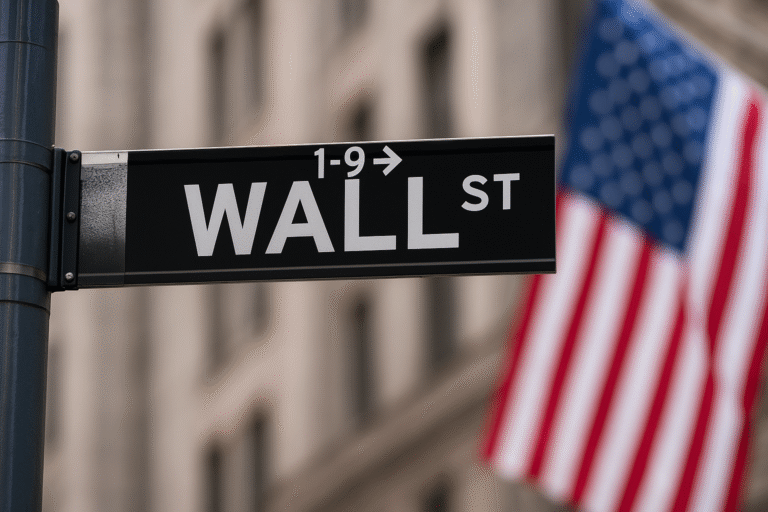
Kroger Store
Kroger’s recent announcement to close 60 underperforming stores over the next 18 months is making headlines, and for good reason. At first glance, it might raise concerns — especially for communities that rely on those stores. But if you look closer, the move reflects a much larger shift that’s underway across the entire retail sector.
Let’s walk through what’s driving this decision, how it ties into Kroger’s broader strategy, and what it signals about the future of grocery retail in the U.S.
Kroger Stock Price (KR): NYSE

Quick Look at Kroger’s Q1 Performance
Kroger released its first-quarter earnings alongside the store closure news. Sales for the quarter came in at $45.1 billion, slightly down from $45.3 billion a year earlier. While that may sound concerning, the company still managed to beat Wall Street’s profit expectations, delivering an adjusted EPS of $1.49 per share.
Some key highlights:
- Same-store sales (excluding fuel) were up around 3%, showing stable consumer demand at existing locations.
- Digital sales grew by 15%, reinforcing the growing role of e-commerce in grocery.
- The company also raised its full-year guidance, expecting identical sales growth between +2.25% and +3.25%.
So, while the top line was modestly lower, operational performance was strong — enough to boost investor confidence and lift the stock.
Why Is Kroger Closing Stores?

The store closures are part of a strategic recalibration, not a sign of retreat. Kroger is shutting down locations that are consistently underperforming, freeing up resources to reinvest in growth areas like:
- Improving the in-store experience in high-traffic locations
- Expanding digital infrastructure for online orders, delivery, and curbside pickup
- Upgrading supply chain efficiency to cut costs and respond faster to customer demand
This is part of what’s often called a “right-sizing” strategy — essentially optimizing the store network for profitability and future relevance.
The company also stated that many employees affected by closures will be given opportunities to transfer to other stores, aiming to reduce the human impact of these changes.
Kroger Isn’t Alone — Retail Closures Are Everywhere
To understand the broader context, it’s important to recognize that Kroger isn’t the only major retailer making these kinds of moves.
Since 2024, we’ve seen a number of retail chains take similar action:
- Walmart has closed more than a dozen stores, mostly small-format locations.
- CVS is in the process of closing hundreds of pharmacy locations as part of a multi-year strategy shift.
- Walgreens and Rite Aid have also downsized, citing declining foot traffic and operational inefficiencies.
- Department stores like Macy’s and Kohl’s are reducing locations as more shoppers shift online.
- Big Lots, facing financial challenges, closed a significant number of stores and filed for bankruptcy protection.
These closures reflect a retail industry that is being reshaped by e-commerce growth, shifting consumer habits, and rising operating costs.
Kroger’s E-Commerce Strategy: A Long-Term Bet

What’s especially clear from Kroger’s Q1 results is that e-commerce is playing a bigger role than ever. The 15% jump in digital sales is no accident — it’s the result of sustained investment in:
- Curbside pickup and delivery
- App-based shopping and personalized offers
- Partnerships with tech platforms to improve fulfillment and logistics
Kroger isn’t just closing stores — it’s also doubling down on the formats that work best for modern customers, particularly those who want speed, convenience, and flexibility.
In addition, the company is enhancing its private label brands, focusing on fresh food, and leveraging AI and automation to create cost efficiencies across its operations.
What This Means for the Future of Retail
Store closures — even large ones — don’t necessarily signal decline. What they often represent is adaptation.
Here’s what this shift likely means for the future of retail:
- Fewer but more productive stores that serve as hubs for online and in-person shopping.
- Omnichannel strategies becoming standard — retailers must blend physical and digital seamlessly.
- More investment in technology and supply chain to stay competitive.
- Retail real estate will evolve, with some former store sites being repurposed for micro-fulfillment centers or mixed-use developments.
At the same time, there’s real concern that communities losing access to essential retail may experience service gaps — especially in lower-income or rural areas. This raises important policy and planning questions around retail accessibilityand local economic impact.
Kroger’s decision to close 60 stores is about more than trimming costs — it’s about preparing for a future where grocery shopping is increasingly digital, personalized, and efficient.
It’s a shift many other retailers are making too. And for customers, it means more options online, improved store experiences, and (hopefully) better value. For investors and analysts, it’s a sign that Kroger is taking a proactive approach in a changing retail environment.
We’ll be watching how this strategy plays out — and how competitors respond. Because one thing’s for sure: the grocery landscape is changing fast, and those who don’t adapt will be left behind.



